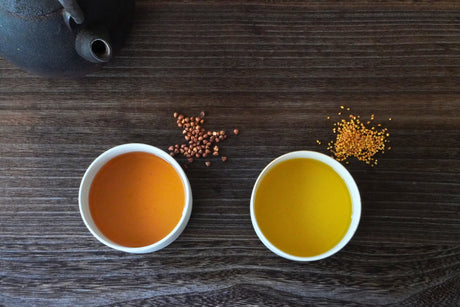
箱根お茶探訪2:TEA FACTORY 如春園
箱根、お茶巡りの旅は、続きます。前回の記事はこちら: 箱根お茶探訪1:NARAYA CAFE NARAYA CAFEでゆったりとした時間を過ごした後、バスに乗って山を下り、小田原へ向かいました。途中、明治時代の歴史的建造物が数多く残る箱根板橋に立ち寄りました。街を歩くとまるでタイムスリップしたかのような感覚になり、古民家を改装したカフェやレストランなど、ゆったりとした散策が楽しめる人気のエリアです。 私たちの目的地は、かつての豆腐工場と住居を美しく改装した、歴史と落ち着いたモダンな感性が融合したTEA FACTORY 如春園でした。 レトロモダンな空間で、人気のカレーを美味しくランチで楽しみました。 食事を楽しみながら、飲んでいたお茶の味を思い出しました。ここは単なるカフェではなく、まさに「小倉茶園(当ウェブサイトではこう呼んでいます)の中心地です。小倉家は近隣の丘陵地帯で、無農薬・有機・無肥料の茶葉栽培を行っています。彼らの理念はシンプルです。栽培から加工まで、すべての工程を丁寧に管理することで、茶樹本来の香りを最大限に引き出すことを目指しています。 香り高く爽やかな和紅茶と、焙煎和紅茶を味わいました。焙煎和紅茶は、ほのかなトーストの香りが漂い、全く新しい味わいでした。一杯一杯が滑らかで、優しく穏やかな味わいに満ちていました。 (写真左:ほうじ紅茶/写真右:小倉さん) お茶を楽しんだ後、小倉さんはカフェのすぐ隣にある工場を親切に案内してくれました。お茶好きにとって、製茶現場を訪れるのは特別な体験です。揉捻機、粉砕機、焙煎機といった、お茶作りに欠かせない機械が一列に並び、季節に合わせて準備されている様子は、まさに圧巻です。ご興味があれば、スタッフが喜んで舞台裏を覗かせてくれます。 店内では幅広い種類のお茶が販売されており、帰路に着いた時に手軽に味わうことができます。 ぜひ一度は訪れるべき場所です。箱根にお越しの際は、ぜひお立ち寄りください。 小倉茶園のおすすめお茶 0536.K3 小倉茶園 KN003: やぶきた和紅茶 神奈川県足柄産ファーストフラッシュ紅茶 足柄産のやぶきた紅茶 やぶきた品種の一番茶。緑がかった色合いで、澄んだ穏やかな渋みが特徴です。デザートや和食とよく合います。 お茶のワークショップを体験 はちみつの香りの紅茶摘み取り体験(蜜香紅茶) ...












